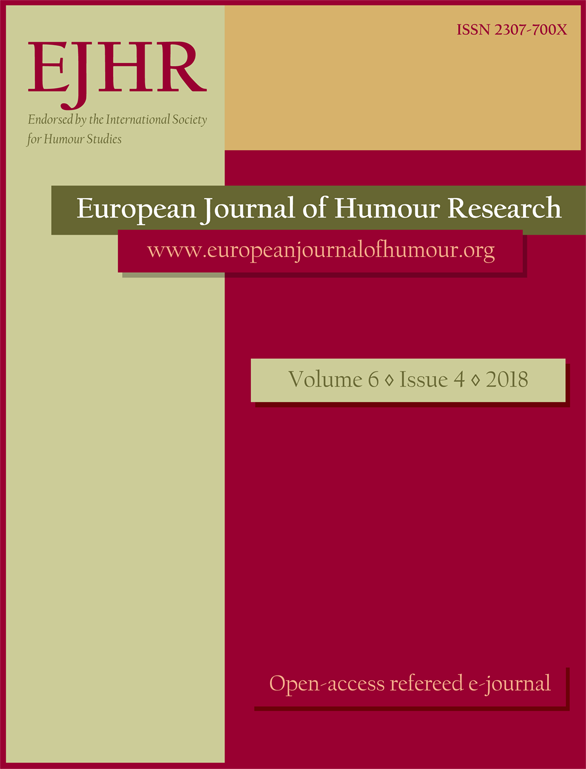
We kindly inform you that, as long as the subject affiliation of our 300.000+ articles is in progress, you might get unsufficient or no results on your third level or second level search. In this case, please broaden your search criteria.

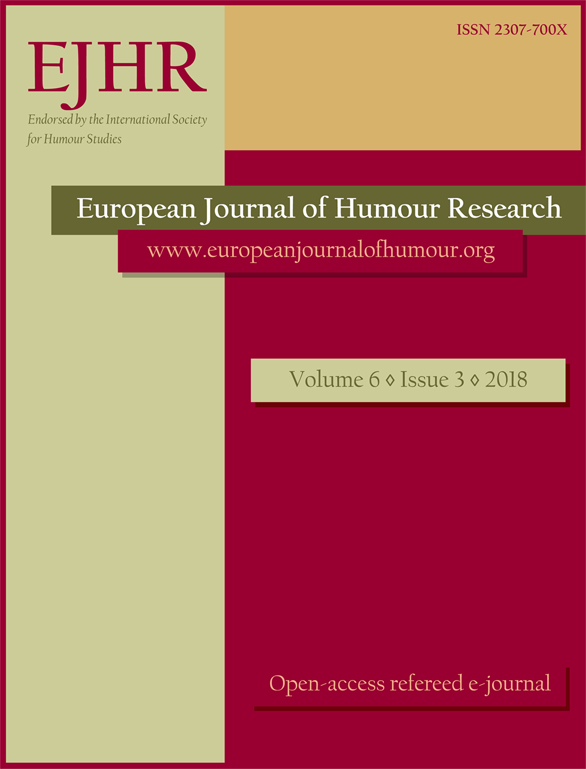
This article addresses the synthesis of humour and paranoia in portrayals of artificial intelligence (AI) in the popular American podcast Welcome to Night Vale (2012-). It argues that contrary to the Relief Theory, fusing humour and cyber-paranoia does not help release the tension (anxious energy) generated within the narrative. Rather, the synthesis of humour and paranoia maintains suspense by creating within the narratives moments of ambiguity with the potential to leave the reader or audience caught between fear and laughter after the story ends.
More...
Incongruity theories maintain that the core of humour is in interplay between meanings. Two incompatible meanings – of situations, verbal utterances or actions – are juxtaposed, one replacing the other or colliding with it. In this paper, I suggest that often the game is not played between two meanings, but between meaning and its carrier. I provide as examples two families of jokes and one general type of humour sharing this mechanism. One of the two families comprises jokes of self-reference, and the other consists of jokes based on deflation of symbols, which means using them in a concrete sense. The general type of humour is the subject of Bergson’s 1900 theory of the comic, mechanical behaviour where flexible human reaction is expected. The mechanism common to all three is a shift of weight from meaning to its carrier. This mechanism is then traced also in other jokes, suggesting possible universality.
More...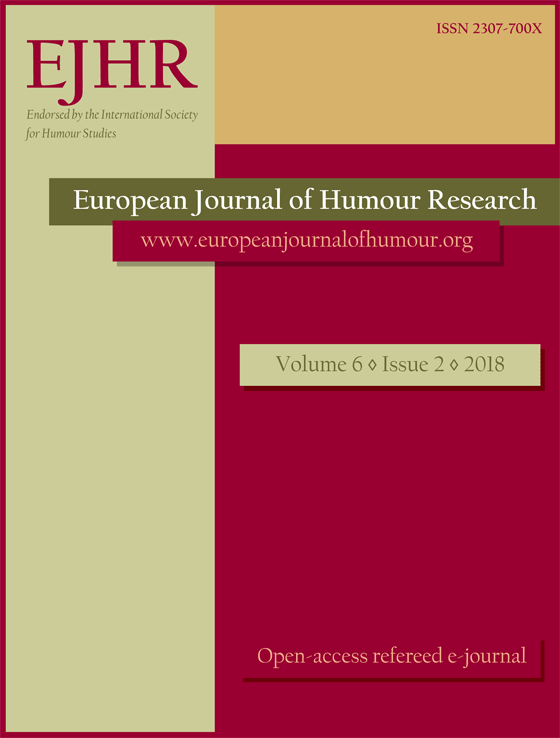
This paper is a tribute to Belarusian folklorist and ethnographer Uladzimir Sysou (1951- 1997) whose extensive legacy includes collecting 139 jokes during his field research in southern Belarus in 1995. Due to his untimely death, these jokes and other folklore items remain unpublished and have, to my knowledge, not been noticed by folklorists. Half of the collected jokes focus on family relations, mostly the relationship between husband and wife. One of the most popular topics of these jokes is adultery. The joke texts show an ambiguous attitude of people towards it. While committing adultery is considered improper, not a lot of effort is made to conceal it. If (or rather, when) a case of adultery comes to light, it does not lead to any serious problems for either spouse in jokes. When studying these jokes, it is curious to place them in historical context and compare them to earlier, Soviet-era jokes about adultery. This study discusses why jokes about adultery in Sysou’s collection differed both quantitatively and qualitatively from adultery jokes found in Soviet collections. The study shows that the high prevalence of jokes on the subject in Sysou’s collection and the liberal attitude towards adultery manifested in them result largely from the decrease in selfand state censorship in Belarus in the early 1990s, set against a backdrop of value pluralisation triggered by the collapse of the USSR.
More...
In my research paper I examine the first two election campaigns in Hungary following the Austro-Hungarian Compromise (1867). In particular, I analyse the ways the campaigns employed tools of humour in popular press products of the time, such as caricatures and texts in humour magazines (Ludas Matyi [‘Mattie the Goose-Boy’], Az Üstökös [‘The Comet’], Borsszem Jankó [‘Johnny Peppercorn’]), which were considered effective political weapons by contemporaries. After a history-oriented introduction devoted to illustrating the muchdebated content of the Compromise, the election system and the historical significance of the analysed papers, I categorize caricatures and the humorous or satirical texts related to the election of parliamentarians along the lines of the following aspects: (1) attacks against specific people, (2) standing up against the principles and political symbols of the opponent, (3) listing well-known, everyday anti-theses, (4) standing up against the press of the opponent, (5) judgment of the role of the Jewish, (6) war metaphors, (7) critique of the campaign methods of the opponent. My goal is to reveal what tools were used to ridicule political opponents, how parties were described to (potential) voters, how the parties tried to promote voting and convince people of their points of view. The analysed texts clearly depict the division of the Hungarian society (either supporting or rejecting the Compromise), and also document that the political tones became coarser and coarser, even in this humorous genre. During campaigns, the topic of elections took over the humour magazines, which serves as evidence for the intensity of public interest.
More...
Most ethnic humour that has been studied so far consists of jokes which use ethnically nonspecific qualities such as stupidity or canniness in order to ridicule an ethnic group and thus to preserve and perpetuate ethnically based social hierarchies in western industrial societies. In light of this dominant logic in ethnic humour theory, the objective of this study is to problematize the relation of such non-ethnic qualities and the notion of ethnic identity, as well as their relation to a specific type of society, in an attempt to convincingly argue in favour of the need to differentiate between ‘ethnically-empty’ functional joke scripts and genuine ethnic joke scripts that are related to the ethnic identity of the target. In so doing, I extend ethnic humour theory by introducing and testing the notion of genuine ethnic joke scripts in order to motivate future research that will tackle other potential ethnic humour idiosyncrasies. Toward this end, I have collected and analysed joke material (N=369) coming from Macedonia, Bulgaria, Serbia, and Albania, societies with histories and relations very different that those in the western industrial societies. Additionally, the study incorporates two questionnaires with members of the two largest ethnicities in the Republic of Macedonia, Macedonians and Albanians, to ascertain the relation between the genuine ethnic humour and ethnic identity.
More...

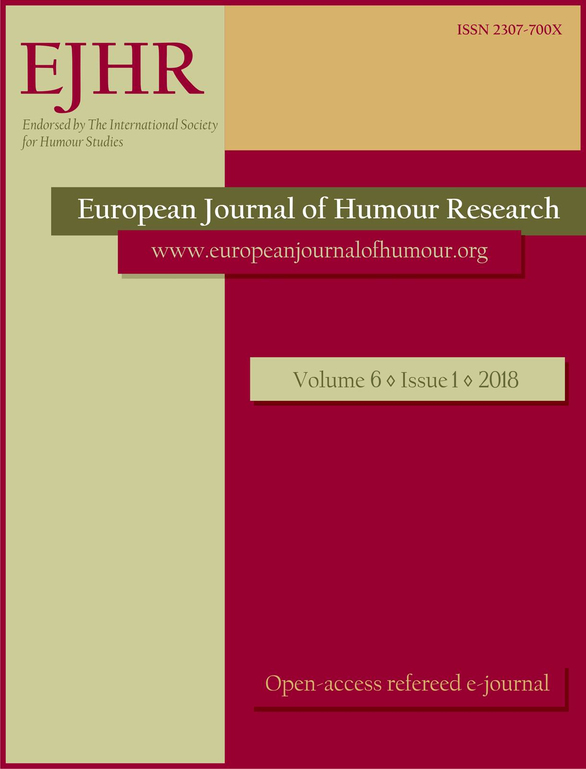
The article focuses on the interpretation of political cartoons and the means of expression a cartoonist uses to convey a message: visual metaphors, visual metonymies as well as metaphors inferred from the image and/or text. The metaphors and visual metonymies in the cartoons are analyzed from the point of view of Conceptual Metaphor and Metonymy Theory. In the analysis, visual and inferential metaphors are viewed as incongruities; there are also incongruities as a result of the interaction between image, title and/or caption. Political cartoons can have more than one focal (visual) incongruity that enables the introduction of a Logical Mechanism from the General Theory of Verbal Humour (GTVH) to (partially) resolve the incongruity/ies. Visual metonymies and images can also function as enablers of a Logical Mechanism. Image and/or text can contrast with or reinforce a Logical Mechanism. Additionally, visual metaphors and metonymies function as contextualization indexes in the interpretation of the cartoons. Humour is the means to get the cartoonist’s message across to the viewer/reader and not an end in itself.
More...
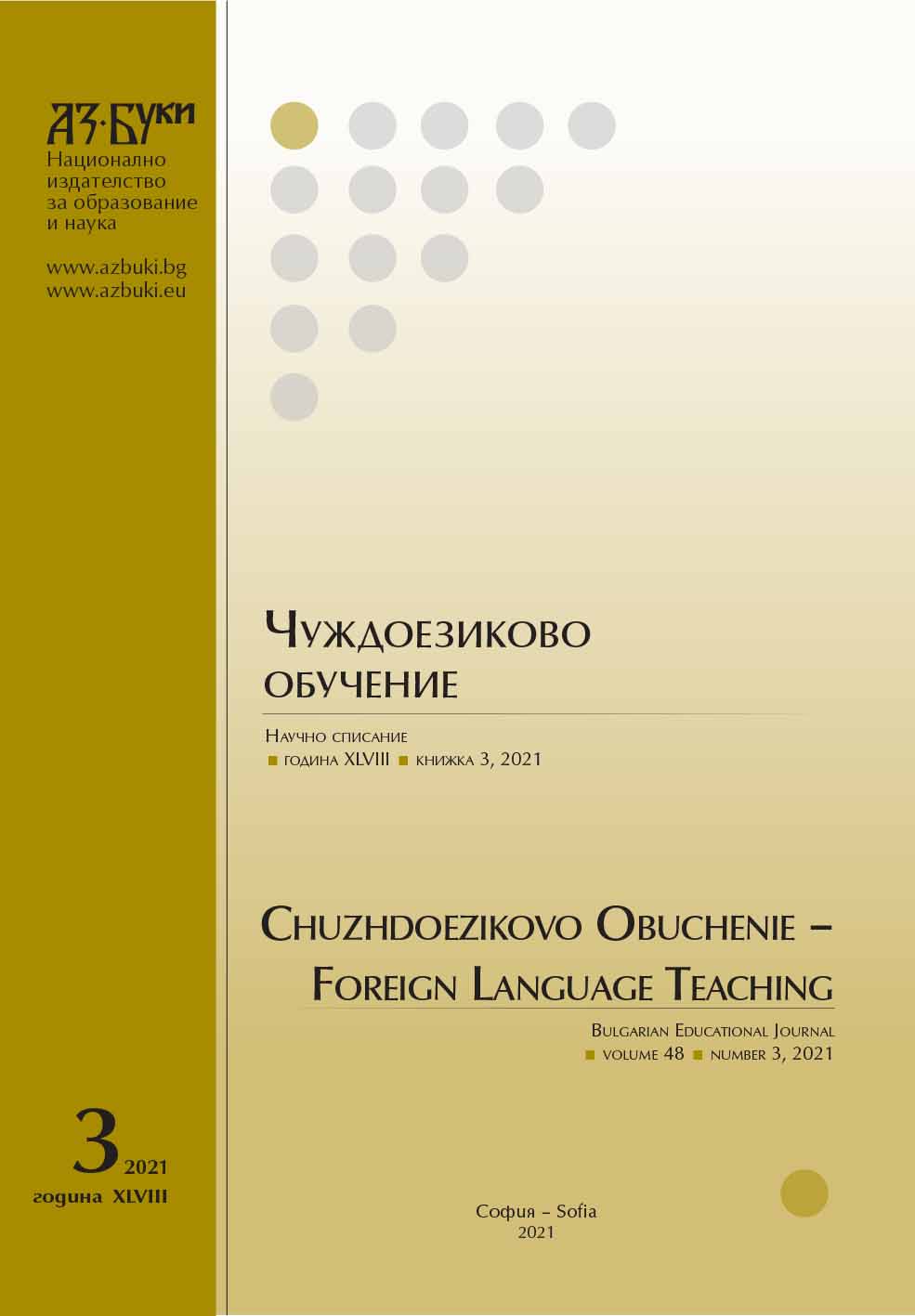
The teaching and learning Spanish legal language as a foreign language for professional and academic purposes has been studied in the present article. The autor departs from trying to examine its main characteristic features and the most common difficulties in the learning process resulting from them. Afterwards, the use of some didactic tools based on learner's profile, specific needs and expectations are explained. These tools don't require a language immersion environment outside the classroom and are designed to help teaching and learning Spanish legal language to university students and professionals such as lawyers, philologists, interpreters and translators.
More...
This paper describes a project implemented by students from the University of Economics in Varna and the University of Costa Rica as part of their respective English Language instruction. In the course of the project six teams comprising students from both universities collaborated to create blogs on topics of their choice. The paper dwells on aims of the project, the process that resulted in the creation of six blogs, the skills that students developed or furthered as a result of this activity and the project outcomes.
More...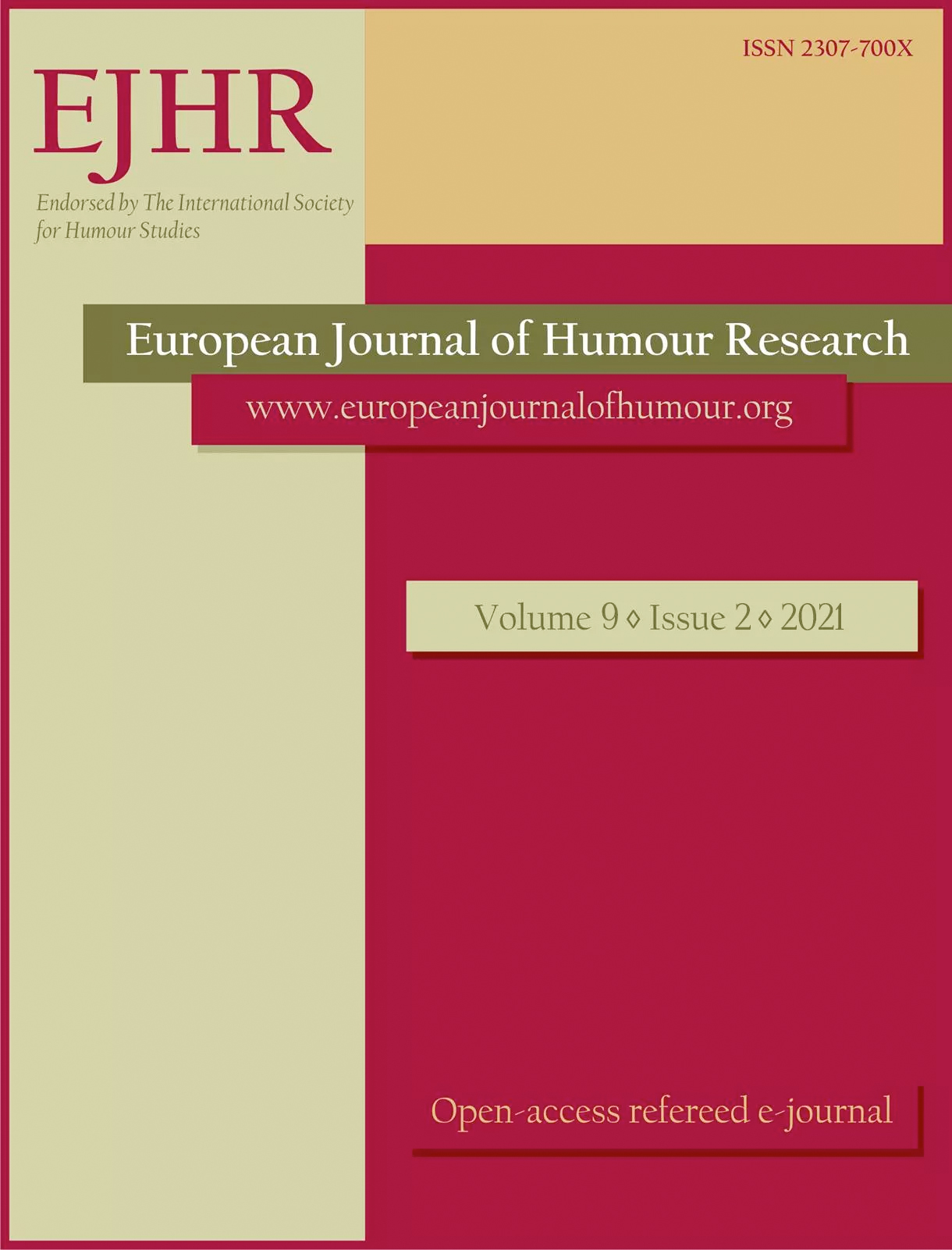
The article highlights the problem of interaction of the ancient Egyptian laughter culture with the category of sacred. A person is confronted with the fact that the examples in question can often be phenomena of a different order, and the use of terms such as “carnival” or even “religion,” “temple” or “priest” in relation to ancient Egypt requires an additional explanation. We find “funny” images on the walls of tombsand in the temples, where the Egyptians practiced their cult. In the Ramesside period (1292-1069 BC), a huge layer of the culture of laughter penetrated the written tradition in a way that Mikhail Bakhtin called the carnivalization of literature. Incredible events are described in stories and fairy tales in a burlesque, grotesque form, and great gods are exposed as fools. Applying the Bakhtinian paradigm to the material of the Middle and New Kingdom allows to reveal the ambivalent character of the Ancient Egyptian laughter: the Egyptians could joke on the divine and remain deeply religious.
More...
Since the very beginning of its proliferation, the Homeric epic has been subject to various ways of interpretation and modes of understanding. Particular attention has been paid to those passages from Homeric poems in which the gods commit obscene, absurd, or comical actions. In the opinion of critics of Iliad and Odyssey, such myths were not worthy of the appropriate faith in the Greek gods. Therefore, my article focuses on the third, “comical” group of these Homeric grey areas, and deals with the following questions: how and why did Homer’s comical passages move from a discourse of the ridiculous and the funny to a discourse of the serious by means of philosophical interpretation over the centuries? I will try to uncover the general principles and conditions of that hermeneutical mechanism which made it possible to translate Homer’s comical plots from the language of Olympic “domestic” nonsense into the language of the most important physical, ethical, and metaphysical truths. To achieve this task, my article will conditionally distinguish two ways of transition from the comical to the serious: the first, which was carried out in ancient allegorism, was to directly produce a translation, and to declare that the “superficial” meaning of the myth is false, and its deep level is true. The second way –ancient symbolism –was to turn the comical into the serious through the immediate translation of comical myths into the religious discourse of the sacred, which did not imply a stark contrast between the comical and the serious but, on the contrary, harmonized them.
More...
George of Trebizond (1395-1472) has spent a significant part of his life translating Greek books into Latin. The bulk of his translations is impressive: from Ptolemy’s Almagestto John Chrysostom’s homilies and works by Cyril of Alexandria, Basil the Great, Gregory of Nyssa, and Aristotle. He was quite an experienced translator, who had worked out an elaborated method explained in several writings. At the height of his career, George rather hastily translated Plato’s Laws. The haste and, probably, George’s bias against Plato and Platonism resulted in numerous inaccuracies of translation. Several years later, Basilios Bessarion closely scrutinized these faults in the fifth book of his In Calumniatorem Platonis, a comprehensive work aiming to refute the arguments set out in George of Trebizond’s anti-Platonic treatise Comparatio Philosophorum Aristotelis et Platonis. The paper analyses the use of such rhetorical devices as sarcasm and irony in Bessarion’s In Calumniatorem Platonisand especially in his commentary on George’s translation of Laws; it also aims to demonstrate how Bessarion turns George of Trebizond into a comic figure, thus compromising both the opponent and his interpretation of Plato’s doctrine.
More...
This article arose from the scandal which broke out in Russia in 2018, when Ulyanovsk cadets made an amateur video clip parodying the Benny Benassi’s musical video (2003). Soon, this video had more than a million views. But official Russian media sharply reproached the cadets’ performance, and even Russian authorities discussed the video. The Russian Internet community issued a lot of videos in support of the cadets. The reaction of Russian media on the cadets’ parody was mainly strong and not always adequate.I am interested in the reasons behind the fear of parody because,in my opinion, the official discourse had nothing to fear. My analysis is based on the Russian theories of parody and the medieval cultural experience. Can parody be dangerous? Why did the official media overreact?
More...
This study aimed to test a hypothesis about the correlation between levels of gelotophobia, gelotophilia, and katagelasticism and understanding of Internet memes as a specific form of humour. Participants were 45 native speakers of Russian (aged 18 –30; 73,3 % female). The levels of Internet memes understanding were assessed independently by two judges with the use of criteria based on the results of a series of semi-structured in-depth interviews. Gelotophobia, gelotophilia, and katagelasticism were assessed with PhoPhiKat <30> questionnaire. J. Raven’s “Standard Progressive Matrices” test was used to control the level of psychometric intelligence. Concordance of judges’ scores for the understanding of memes was assessed with Kendall’s W and ranged from 0.71 to 0.84. Spearman’s rank correlation coefficient was used to test the main hypothesis. We found no correlation between the scores for gelotophobia, gelotophilia, and katagelasticism and understanding of Internet memes. Presumably, the type of attitude towards humour does not play a significant role in the understanding of comical texts. The qualitative content analysis of the interview protocols revealed some specific features of cognitive mechanisms of Internet memes understanding. Namely, successful participants with higher levels of understanding of Internet memes reflected more on their thinking process than those with lower levels of understanding of Internet memes, easily switched from an abstract level of reasoning to a concrete one, and tended to consistently develop detailed mental representations of the memes.
More...
Gelotophobia, or the fear of being laughed at, has been described as an inability to enjoy humour and laughter in social interaction. A number of studies have shown its increased levels under various mental disorders. Gelotophobia in psychiatric patients may appear either as a primary syndrome, or as a secondary disorder connected to the patient’s reaction to their social position (self-stigmatisation). In turn, self-stigmatisation is closely related to the personality of the patient and, in particular, to their attitudes to illness. Since the fear of being laughed at has been studied within both the clinical concept and the continual model of individual differences, the question of differentiation between normal and pathological fear of being laughed at is topical, while borderline groups are of particular interest. The aim of the present study was to examine the relationship between gelotophobia, attitudes to illness, and self-stigmatisation in patients with minor, non-psychotic mental disorders, as well as those with brain injuries, who also had mild mental disorders, without having the status of psychiatric patients. The sample consisted of 73 patients with non-psychotic mental disorders, and 30 patients with brain injuries. The methods used included PhoPhiKat-30, ISMI-9 (Internalized Stigma of Mental Illness Inventory), and TOBOL (Types of the Attitudes to Disease). The results revealed at least a slight level of gelotophobia in 31% patients with non-psychotic mental disorders, and 20% in those with brain injuries. Gelotophobia correlated with certain types of attitude to illness in each group. Subjects displaying high levels of gelotophobia were in general characterised by disadvantageous attitudes to illness. In the group of psychiatric patients, gelotophobia was associated with self-stigmatisation, whereas in the group of neurological patients it was not. Thus, in this study gelotophobia was examined for the first time in patients with non-psychotic mental disorders, as well as in those with brain injuries. Differentmechanisms of gelotophobia development were suggested for the two groups.
More...

In How to Do Things with Words (1962), the philosopher John Austin claimed that we use words to do things in the world, not merely to express a state of affairs. This proposal introduced speech acts, and essentially initiated the study of linguistic pragmatics. Speech acts in everyday communication include persuading, apologizing, criticizing, humiliating, complimenting and a host of other intended behaviours. Austin accentuated the idea of speaker intention, on one hand, and hearer’s response to that intention if successfully conveyed, on the other. We consider some of the speech acts used in the work of selected standup comedians to analyse the way they determine the relationship of performer and audience. We argue that there is a reciprocal relationship between the licensing of certain speech acts in standup comedy, and the success of these speech acts in shaping the social lives of the audience. We show that this relationship is at the forefront of standup comedy’s social impact and that it can generate heightened consciousness of the social and political environment of the time. Finally, we consider the question of whether socially critical standup can have any noticeable effect on the attitudes or behaviour of both live and digitally mediated audiences.
More...